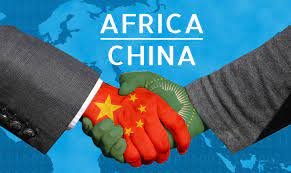
Relationship between the Africa-China is coming up into a new phase with fresh policy introductions, development strategies and financial pledges as tools for enhancing deeper and broader engagement by 2035.
To this end, a report by Economist Intelligence shows that China aims to push the trade from medium to long term over the next decade trying to outdo major international powers such as the America and EU.
The Asian economic powerhouse is targeting sectors such as information and communications technology (ICT) infrastructure and services, agricultural ventures, consumer goods and electronics, light manufacturing and finance.
To consolidate its position as the largest single-country trader in the continent, it has previously pledged to buy a total of $300 billion worth of products from Africa between 2022 and 2024.
This was during the eighth Forum on China-Africa Cooperation (FOCAC) meeting. The purchase would maintain the record level of African exports to China that was achieved in 2021.
China will further aim to become self-reliant in terms of essential inputs to production, especially high-end technology and will attempt to minimise logistics bottlenecks.
It will be achieved through building more secure supply chains for essential materials from closely aligned trade partners.
Building overseas markets as an outlet for its export industries and as a business opportunity for its foreign investment community is also a strategy China intends to implement.
Renewed interest could also come from the emerging Global Development Initiative, a new scheme proposed by China’s president, Xi Jinping, at the UN General Assembly in September 2021.
China has maintained its one-year Loan Prime Rate (LPR) at 3.70 per cent and the five-year LPR at 4.45 per cent.
Although there’s an expected slowdown in Chinese demand in the 2022 to 2026 period, especially in construction, the sector is dependent on the intensive use of natural resources which will make this difficult to achieve.
This is because the amount of materials used in production and consumption continues to rise globally as the rate at which materials are being extracted is outpacing both population and economic growth.
Therefore, if the usual use of more materials with less efficiency continues, global resource extraction will increase to 110 per cent by 2060 as noted in the One Planet report.
“The EU and America in their active implementation of foreign policy that seeks to reshape their own economic and political relations with Africa is also another factor that will slow down China’s efforts in the next four years. It will to an extent, help to counter, but not dislodge Chinese influence across the continent”, the report reads in part.
China’s trade with Africa in the past year has seen the exports from African countries increase by almost 50 per cent whereas the imports from China increased by almost 17 per cent.
This is attributed to the 35 per cent rise in the value of trade between Africa and China from 2020 to $254 billion last year.
The top exporters were South Africa, Angola and the Democratic Republic of Congo (DRC) with 31, 20 and 11 per cent of total African exports respectively.
Kenya was ranked fifth among the top importers from the Chinese market with five per cent of total African imports from China.
Nigeria was the top importer with 16 per cent followed by South Africa with 14 per cent then Egypt at the third with 12 per cent.
Earlier, trade data gleaned from the National Bureau of Statistics (NBS) and analysed by The Guardian showed that Nigeria spent N19.12 trillion on imported commodities from China in less than four years – from January 2018 to September of 2021.
Economists have seen the deepening Chinese influence in the local market as a huge drain and cost on the ailing domestic economy as imports constitute leakages in any economy.
Within the referenced period, Nigeria exported a paltry N2.09 trillion worth of commodities to China, putting the trade deficit at N17.03 trillion.
In each of the quarters in the four years, China accounted for 27 per cent of Nigeria’s total imports, leading the country’s second top trading partner, India, and other top trading partners by a wide margin, in each of the years.





